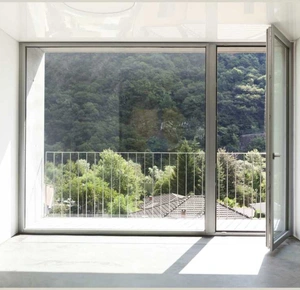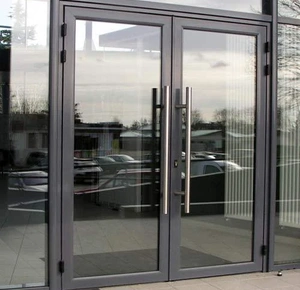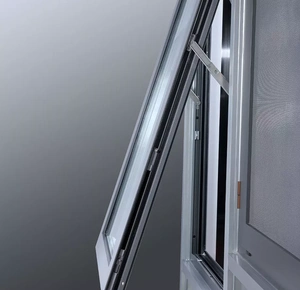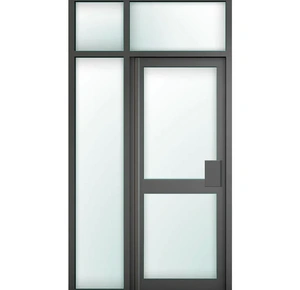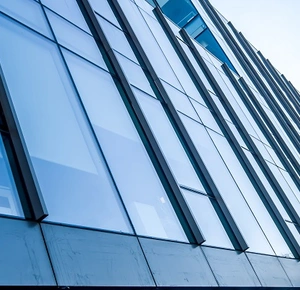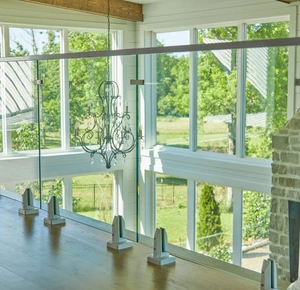Why Choosing Curtain Wall: The Modern Solution for Building Facades
When it comes to modern architecture, few design elements are as iconic and impactful as the curtain wall system. Characterized by expansive glass panels and sleek aluminum frames, curtain walls offer a clean, sophisticated aesthetic while providing functionality and durability for a wide range of building types, from commercial skyscrapers to high-end residential buildings.
But beyond their aesthetic appeal, curtain walls bring several practical benefits that make them a preferred choice for architects, designers, and builders. This article explores why choosing a curtain wall for your building design is a smart decision, highlighting key advantages such as energy efficiency, natural lighting, durability, and flexibility in design.
1. What is a Curtain Wall?
A curtain wall is a non-structural outer covering for buildings, typically made from lightweight materials like glass, aluminum, or steel. Unlike load-bearing walls, curtain walls do not support the building’s structural weight; instead, they are anchored to the building’s frame, allowing them to act as a protective shield.
Because curtain walls are non-load-bearing, they can be made from materials like glass, which offers maximum transparency and aesthetic appeal while still protecting the building from the elements, such as wind, rain, and temperature fluctuations.
2. Aesthetic Appeal and Modern Design
One of the primary reasons architects and designers choose curtain walls is their aesthetic value. The sleek, expansive glass panels create a contemporary look that enhances the overall appearance of the building. For high-rise buildings, curtain walls give the impression of seamless glass facades, which not only look stunning but also provide unobstructed views for the occupants inside.
Why curtain walls are popular in modern design:
- Minimalist elegance: The clean lines and large glass panes create a minimalist, elegant look that is favored in modern architectural trends.
- Maximized transparency: With minimal framing and large glass areas, curtain walls maximize the amount of natural light entering the building.
- Uniform appearance: Curtain walls provide a smooth, continuous surface, which can give even large, complex buildings a cohesive, streamlined appearance.
Whether used in commercial skyscrapers, office buildings, or high-end residential complexes, curtain walls convey a sense of modernity and sophistication, making them a popular choice for buildings that want to stand out.
3. Energy Efficiency
While curtain walls are often associated with glass facades, they can also be designed with energy efficiency in mind. Modern curtain walls incorporate advanced insulating technologies, such as double or triple glazing, Low-E coatings, and thermal breaks, to improve the building's energy performance.
Key energy-efficient features of curtain walls:
- Double or triple glazing: Curtain walls with double-glazed or triple-glazed windows offer superior insulation by trapping a layer of air (or gas) between the glass panes. This reduces heat transfer and improves the building's energy efficiency, keeping it cooler in summer and warmer in winter.
- Thermal breaks: In aluminum curtain wall systems, thermal breaks—insulating materials placed between the interior and exterior parts of the frame—minimize heat conduction through the metal, further enhancing energy efficiency.
- Low-E glass coatings: Low-emissivity (Low-E) coatings on the glass reduce the amount of infrared and ultraviolet light that can pass through, reflecting heat back into the building during winter and keeping heat out during summer.
By improving thermal insulation and minimizing energy loss, curtain walls can significantly reduce heating and cooling costs, making them an eco-friendly option for buildings seeking energy-efficient designs.
4. Maximizing Natural Light
One of the most celebrated advantages of curtain walls is their ability to let in natural light. Large glass panes provide expansive views and allow natural light to penetrate deep into the building’s interior, creating a brighter, more inviting environment.
Benefits of maximizing natural light with curtain walls:
- Reduced need for artificial lighting: With more natural light entering the building, the need for artificial lighting is reduced during the day, leading to lower energy consumption.
- Improved well-being: Studies show that increased exposure to natural light can enhance mood, productivity, and overall well-being, making curtain walls an ideal choice for offices and workplaces.
- Better aesthetics: The influx of natural light can enhance the aesthetic appeal of the building's interior, creating a sense of openness and spaciousness.
For commercial properties and high-end residences, curtain walls contribute to creating healthier living and working environments, while also improving the overall ambiance of the space.
5. Durability and Weather Resistance
While the glass facade of a curtain wall may appear delicate, these systems are designed to offer exceptional durability and protection against the elements. Curtain walls are constructed to withstand harsh weather conditions, from high winds to heavy rains and even seismic activity.
How curtain walls enhance durability and weather resistance:
- Waterproofing: Curtain walls are engineered with drainage channels and seals that prevent water from penetrating the building, protecting the interior from moisture damage.
- Wind resistance: The lightweight materials used in curtain walls are designed to flex and move with the building structure, reducing the risk of damage during high winds or extreme weather conditions.
- Thermal resistance: With the right insulating materials, curtain walls can maintain consistent indoor temperatures, preventing heat gain in summer and heat loss in winter.
- Corrosion resistance: Aluminum and steel, which are commonly used in curtain wall framing, are naturally resistant to rust and corrosion, ensuring that the system lasts for decades with minimal maintenance.
Curtain walls provide not only aesthetic and functional benefits but also a long-lasting solution that protects buildings from environmental stressors.
6. Design Flexibility
Curtain walls offer incredible flexibility in design, allowing architects to create innovative, one-of-a-kind building facades. The ability to use a variety of materials—glass, aluminum, steel—gives designers the freedom to experiment with different shapes, sizes, and configurations, leading to truly unique architectural forms.
Customization options for curtain walls:
- Variety of materials: Curtain walls are highly customizable, allowing for different materials, including glass, aluminum, or even stone veneers, to be incorporated into the design.
- Modular systems: Curtain walls can be installed in unitized or stick-built systems, providing flexibility in terms of installation and design complexity.
- Unique shapes and designs: Architects can create bold and dynamic shapes with curtain walls, from curved facades to angular designs, thanks to the flexibility of the materials.
The modular nature of curtain walls also means they can be installed quickly and efficiently, reducing construction time and costs compared to traditional masonry or load-bearing walls.
7. Low Maintenance and Longevity
Curtain walls are designed for low maintenance. Unlike brick or stone facades, which may require regular cleaning, repairs, or repainting, curtain walls require minimal upkeep. The materials used—particularly glass and aluminum—are highly resistant to corrosion, fading, and weathering, ensuring that the building maintains its appearance over time.
Maintenance benefits of curtain walls:
- Corrosion-resistant materials: Aluminum and steel framing are resistant to rust, reducing the need for constant maintenance or replacement.
- Easy cleaning: Curtain walls, especially those made of glass, are easy to clean and maintain, usually requiring nothing more than regular window cleaning to maintain their pristine appearance.
- Longevity: With proper installation and occasional inspections, curtain walls can last for decades, offering a durable, long-term solution that won’t degrade quickly over time.
This longevity makes curtain walls an attractive investment for property owners looking to maximize the value of their building with minimal ongoing maintenance.
8. Sustainability and Eco-Friendliness
Curtain walls also align with the growing demand for sustainable building practices. By incorporating energy-efficient features, such as double glazing and Low-E glass, curtain walls can reduce the building's carbon footprint by minimizing energy consumption.
Additionally, materials like aluminum used in curtain walls are highly recyclable, further contributing to the sustainability of the building design.
Sustainability advantages:
- Lower energy consumption: Improved insulation and natural light reduce reliance on heating, cooling, and artificial lighting, lowering energy bills and environmental impact.
- Recyclable materials: Many of the materials used in curtain walls, such as aluminum, can be recycled, reducing waste during construction and renovation.
- LEED certification: Buildings with energy-efficient curtain walls can earn LEED (Leadership in Energy and Environmental Design) certification, improving their environmental performance and marketability.
Conclusion
Choosing a curtain wall system for your building offers a perfect balance of aesthetic appeal, energy efficiency, durability, and design flexibility. Whether you're designing a commercial skyscraper or a modern residential complex, curtain walls provide a sophisticated, sustainable solution that enhances both the exterior and interior spaces.
With benefits ranging from maximizing natural light to long-term durability, curtain walls are an ideal choice for forward-thinking architects and property developers looking to create beautiful, efficient, and environmentally friendly buildings.
Frequently Question and Answers
What is a curtain wall system?
A curtain wall is a non-structural exterior facade made of lightweight materials like glass and aluminum, attached to the building’s frame. It does not support the building’s structural load and serves as a protective shield against the elements.
Why are curtain walls popular in modern buildings?
Curtain walls are popular due to their sleek, modern appearance, ability to maximize natural light, and provide unobstructed views. They also enhance the overall aesthetic of the building and are customizable to fit different designs.
How do curtain walls improve energy efficiency?
Curtain walls improve energy efficiency through double or triple glazing, Low-E glass coatings, and thermal breaks, which reduce heat transfer and help lower energy costs for heating and cooling.
Are curtain walls durable and weather-resistant?
Yes, curtain walls are designed for durability and weather resistance. They protect against wind, water, and temperature fluctuations, while materials like aluminum and steel offer long-lasting performance with minimal maintenance.
Can curtain walls be used in sustainable building designs?
Yes, curtain walls can contribute to sustainable building practices by incorporating energy-efficient materials and maximizing natural light. They also reduce energy consumption and use recyclable materials like aluminum.
What types of buildings benefit most from curtain walls?
Curtain walls are commonly used in commercial buildings, skyscrapers, and high-end residential properties, where aesthetic appeal, energy efficiency, and durability are priorities.
